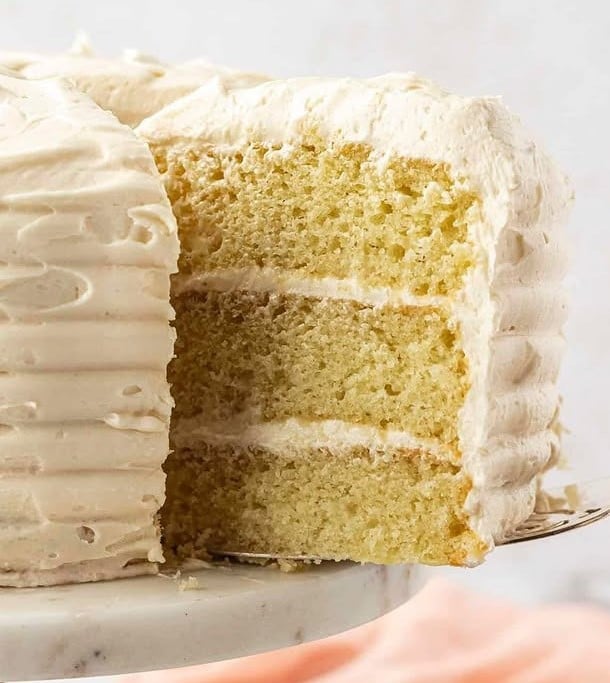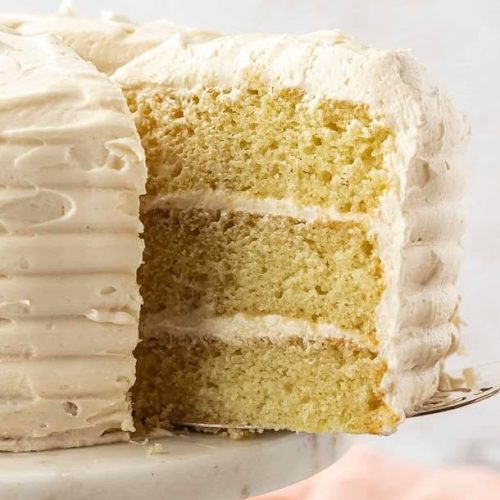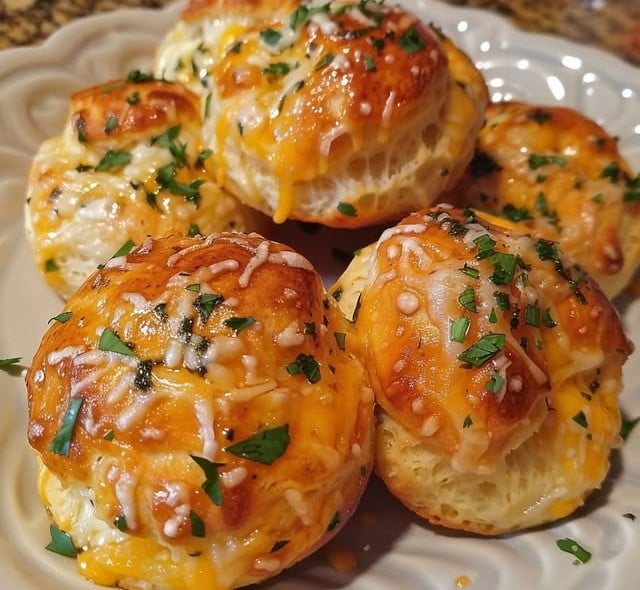A few years ago, I stumbled upon a dusty recipe box while cleaning out my mother’s pantry. Tucked between handwritten notes and magazine clippings was a faded index card, titled “Vanilla Buttermilk Cake – Do Not Lose!” in her neat cursive.
I laughed at the dramatic warning but instantly knew it had to be something special. That weekend, I gave the recipe a try—and when that first forkful of moist, tender vanilla cake touched my lips, I understood exactly why she’d labeled it like a national treasure.
The scent alone was enough to transport me back to Sunday afternoons when Mom would whip up cakes while humming her favorite oldies. Her cakes were never too sweet, never too dry. Just right. And always made with buttermilk, which she swore by for its “magic softness.”
Over time, I’ve slightly adjusted her recipe—only for clarity, never for taste. This cake has become a household classic, baked for birthdays, baby showers, and even lazy weekend cravings. It’s soft, rich, and layered with dreamy vanilla buttercream that melts just a little on a warm slice.
Every time I bake it, the kitchen fills with that familiar aroma—warm vanilla, creamy butter, and just a hint of nostalgia. It’s not just a cake; it’s a piece of family history that you can hold on a fork.

Short Description
This moist vanilla buttermilk layer cake is rich, tender, and full of comforting flavor. With a fluffy crumb and smooth vanilla buttercream, it’s a foolproof recipe perfect for celebrations or sweet indulgence.
Key Ingredients
For the cake:
- 3 cups all-purpose flour
- 1 tablespoon baking powder
- 1/2 teaspoon baking soda
- 1/2 teaspoon salt
- 1 cup unsalted butter, softened
- 2 cups granulated sugar
- 4 large eggs
- 1 tablespoon pure vanilla extract
- 1 1/4 cups buttermilk
For the vanilla buttercream frosting:
- 1 cup unsalted butter, softened
- 4 cups powdered sugar
- 2 teaspoons vanilla extract
- 2–3 tablespoons heavy cream or milk
- Pinch of salt
Tools Needed
- Two 9-inch round cake pans
- Parchment paper
- Electric hand mixer or stand mixer
- Mixing bowls
- Measuring cups and spoons
- Cooling racks
- Offset spatula or butter knife
Cooking Instructions
Step 1: Prep the pans and oven
Preheat your oven to 350°F (175°C). Grease two 9-inch round cake pans, flour them lightly, and place a parchment paper circle at the bottom of each pan to prevent sticking.
Step 2: Mix the dry ingredients
In a medium bowl, whisk together the flour, baking powder, baking soda, and salt. Set aside.
Step 3: Cream the butter and sugar
In a large bowl, cream the softened butter and sugar together for 4–5 minutes until it turns pale and fluffy.
Step 4: Add eggs and vanilla
Beat in the eggs one at a time, mixing well after each addition. Stir in the vanilla extract.
Step 5: Alternate dry ingredients and buttermilk
Add the flour mixture in three parts, alternating with the buttermilk in two parts (beginning and ending with the dry ingredients). Mix until just combined—avoid overmixing to keep the cake soft.
Step 6: Divide and bake
Divide the batter evenly between the two pans. Smooth the tops with a spatula and bake for 28–32 minutes, or until a toothpick inserted in the center comes out clean.
Step 7: Cool the layers
Let the cakes cool in the pans for 10 minutes, then gently turn them out onto wire racks. Allow them to cool completely before frosting.
Step 8: Make the frosting
Beat the butter until creamy. Gradually add powdered sugar, vanilla, salt, and cream. Beat until light, fluffy, and smooth. Adjust cream amount for desired consistency.
Step 9: Assemble the cake
Place one cake layer on your serving plate. Spread a generous amount of frosting on top. Add the second layer and frost the top and sides. Decorate as desired.
Why You’ll Love This Recipe
– Classic vanilla flavor with a nostalgic twist
– Buttermilk gives it a tender crumb and mild tang
– Beginner-friendly with simple ingredients
– Pairs beautifully with almost any frosting or fruit
Mistakes to Avoid & Solutions
1. Overmixing the batter
Why it’s bad: Overmixing develops gluten and makes the cake tough.
Solution: Mix just until the flour disappears. Use a spatula to fold in the last bit gently.
2. Skipping parchment paper
Why it’s bad: Cakes may stick to the pan and break.
Solution: Always grease, flour, and line your pans with parchment. It makes removal effortless.
3. Not creaming the butter and sugar long enough
Why it’s bad: You’ll miss out on that light, airy texture.
Solution: Cream for at least 4–5 minutes until pale and fluffy.
4. Using cold ingredients
Why it’s bad: Cold eggs or butter can cause the batter to curdle.
Solution: Let everything come to room temperature before starting.
5. Frosting while the cake is warm
Why it’s bad: The buttercream will melt and slide off.
Solution: Ensure both cake layers are completely cool before frosting.
Serving and Pairing Suggestions
– Serve slightly warm with a scoop of vanilla or strawberry ice cream.
– Pairs wonderfully with fresh berries, especially strawberries or raspberries.
– Ideal for brunches with coffee or afternoon tea.
– Perfect as a celebration centerpiece with a drizzle of chocolate or caramel sauce.
– For a plated dessert, serve with a dollop of whipped cream and a mint sprig.
Storage and Reheating Tips
Room Temperature: Store in a covered cake dome for up to 2 days.
Refrigerator: Keep in an airtight container for 4–5 days. Let sit at room temperature before serving.
Freezer (Unfrosted Layers): Wrap each layer tightly in plastic wrap and freeze for up to 2 months.
Freezer (Frosted): Flash-freeze until solid, then wrap and store. Thaw overnight in the fridge.
Reheating: Gently microwave a slice for 10–15 seconds to refresh the texture.
FAQs
1. Can I make this cake ahead of time?
Yes! You can bake the layers a day in advance and wrap them tightly. Frost just before serving.
2. What if I don’t have buttermilk?
You can make a substitute by mixing 1 1/4 cups milk with 1 tablespoon white vinegar or lemon juice. Let it sit for 5 minutes before using.
3. Can I use this recipe for cupcakes?
Absolutely. This recipe makes about 24 cupcakes. Bake at 350°F for 18–20 minutes.
4. Can I reduce the sugar?
You can reduce the sugar slightly, but it may affect the texture. Try cutting just 1/4 cup if you prefer a less sweet cake.
5. What frosting alternatives work well with this cake?
Cream cheese frosting, chocolate ganache, or lemon glaze are all delicious with this base.
Tips & Tricks
– Sift your powdered sugar for a silky-smooth frosting.
– Use cake strips or wrap wet paper towels around your pans for flat, even layers.
– Chill the frosted cake for 30 minutes before slicing for cleaner cuts.
– Add a tiny pinch of nutmeg or almond extract for a flavor twist.
– If your frosting is too stiff, add cream a teaspoon at a time.
Recipe Variations
1. Lemon Vanilla Buttermilk Cake
Swap vanilla extract for 1 teaspoon vanilla + 1 tablespoon lemon zest in the batter.
Add 1 tablespoon lemon juice to the frosting for a tangy bite.
Pairs perfectly with blueberry compote or lemon curd between layers.
2. Almond Vanilla Layer Cake
Replace 1/2 tablespoon vanilla with almond extract.
Add 1/4 cup finely chopped toasted almonds to the batter.
Top with almond slices for crunch and visual appeal.
3. Berry-Filled Vanilla Cake
Gently fold 1 cup of chopped fresh strawberries or raspberries into the batter.
Add a layer of berry jam or compote between cake layers.
Frost as usual, then top with fresh berries.
Final Thoughts
Every time this vanilla buttermilk layer cake rests on the counter, cooling beneath a swirl of sugary air, it feels like a quiet celebration. No party hats, no candles—just that calm hush that settles when something worth savoring has just come out of the oven. It’s not trying to impress; it just is impressive.
The balance of richness and lightness, the old-fashioned soul wrapped in a soft crumb, the kind of frosting you sneak extra spoonfuls of—this cake doesn’t shout. It speaks in warm tones and gentle textures.
It’s the kind of dessert that draws people to the kitchen long before it’s sliced. And once it is? Plates are clean, conversations stretch out, and someone always asks for the recipe. This isn’t just a cake for a special occasion—it becomes the occasion. And honestly, those are the best kind.

Mom’s Moist Vanilla Buttermilk Layer Cake
Ingredients
For the cake:
- 3 cups all-purpose flour
- 1 tablespoon baking powder
- 1/2 teaspoon baking soda
- 1/2 teaspoon salt
- 1 cup unsalted butter softened
- 2 cups granulated sugar
- 4 large eggs
- 1 tablespoon pure vanilla extract
- 1 1/4 cups buttermilk
For the vanilla buttercream frosting:
- 1 cup unsalted butter softened
- 4 cups powdered sugar
- 2 teaspoons vanilla extract
- 2 –3 tablespoons heavy cream or milk
- Pinch of salt
Instructions
- Preheat the oven to 350°F (175°C). Grease two 9-inch round cake pans, lightly flour them, and line the bottoms with parchment paper.
- Whisk together the flour, baking powder, baking soda, and salt in a medium bowl. Set aside.
- Beat the softened butter and sugar in a large bowl for 4–5 minutes until pale and fluffy.
- Add the eggs one at a time, beating well after each. Stir in the vanilla extract.
- Add the flour mixture in three parts, alternating with buttermilk in two parts, starting and ending with the flour mixture. Mix until just combined.
- Divide the batter between the two pans. Smooth the tops and bake for 28–32 minutes, or until a toothpick inserted comes out clean.
- Cool the cakes in the pans for 10 minutes, then transfer to wire racks to cool completely.
- Beat the butter until creamy. Gradually add powdered sugar, vanilla, salt, and cream. Beat until smooth and fluffy.
- Place one cake layer on a serving plate. Frost with a generous amount of buttercream, top with the second layer, and frost the top and sides. Decorate as desired.



